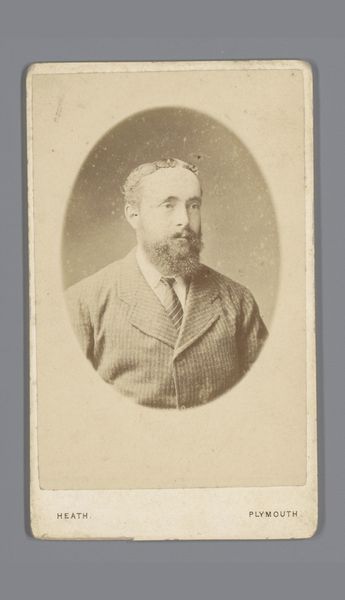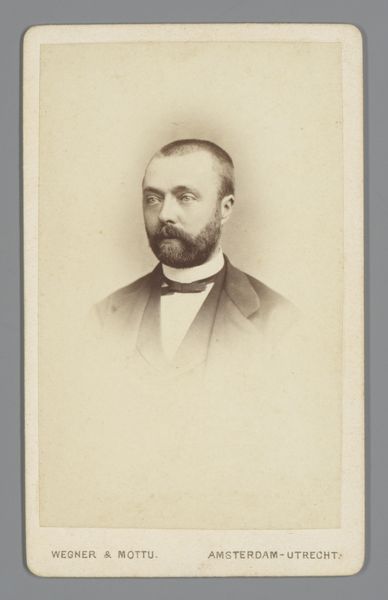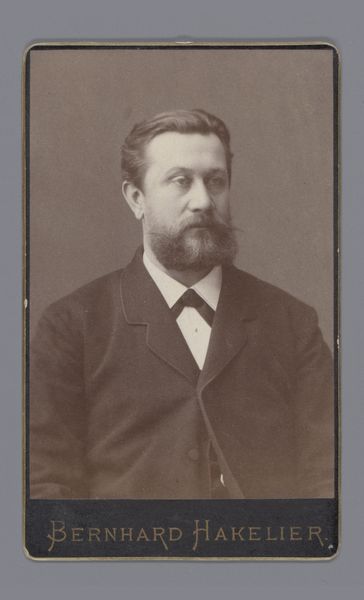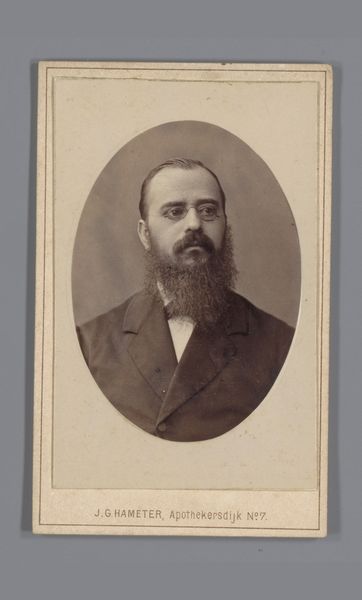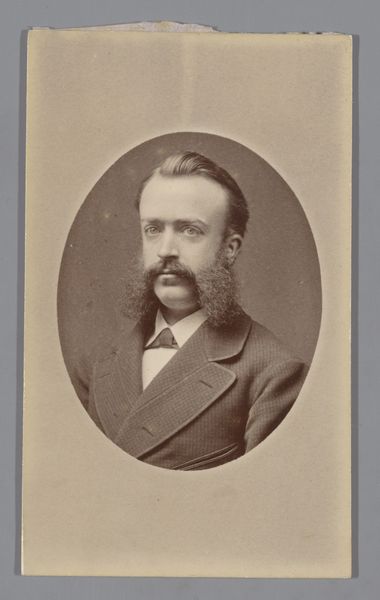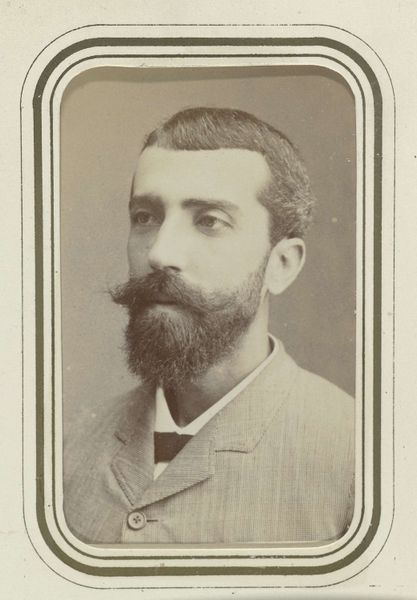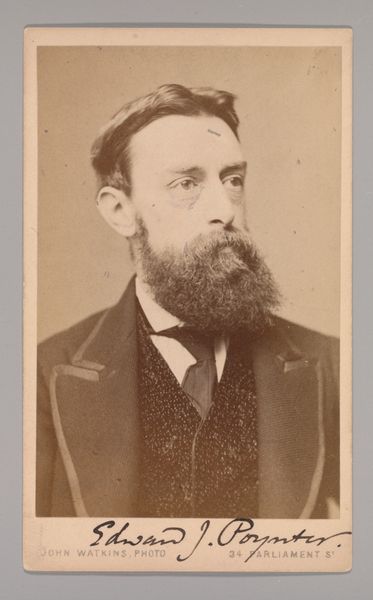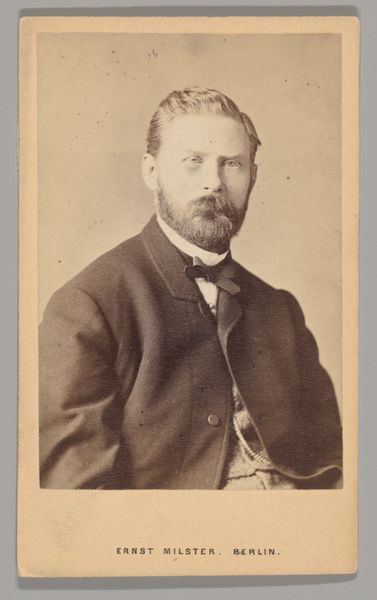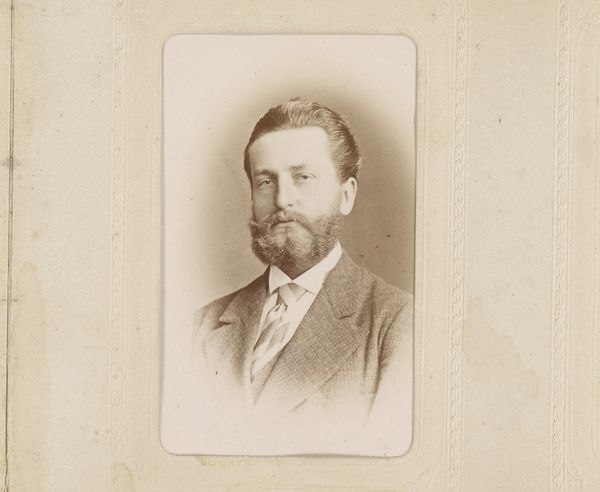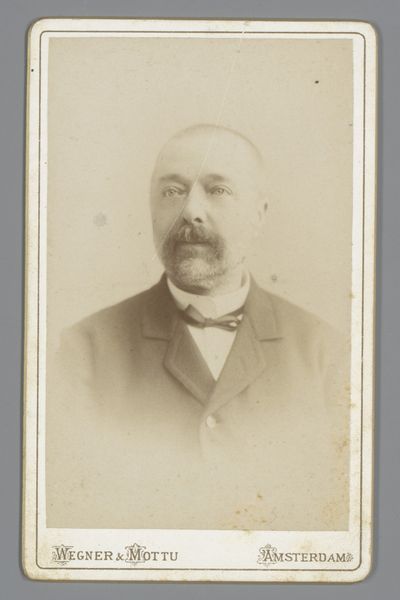
photography, gelatin-silver-print
#
portrait
#
photography
#
historical photography
#
gelatin-silver-print
#
19th century
Dimensions: height 103 mm, width 64 mm
Copyright: Rijks Museum: Open Domain
This is an albumen print of an unknown, bearded man by Willem Gerhardus Kuijer, made sometime in the late 19th century. The albumen process, invented in 1850, was one of the most popular ways of making photographs at the time. It involved coating a sheet of paper with egg white and then exposing it to light through a negative. The process resulted in a sharp image with fine detail, with a slightly warm tone, as we can see here. It was the first commercially exploitable method of producing photographs on paper. Albumen prints were relatively inexpensive and easy to produce which helped make photography accessible to a wider audience. The rise of photography in the 19th century also had a profound impact on the production of images and the nature of labor. While traditional portraiture required the work of highly skilled artists, photography democratized the process, and created a new kind of visual culture, which impacted the traditional art market.
Comments
No comments
Be the first to comment and join the conversation on the ultimate creative platform.
